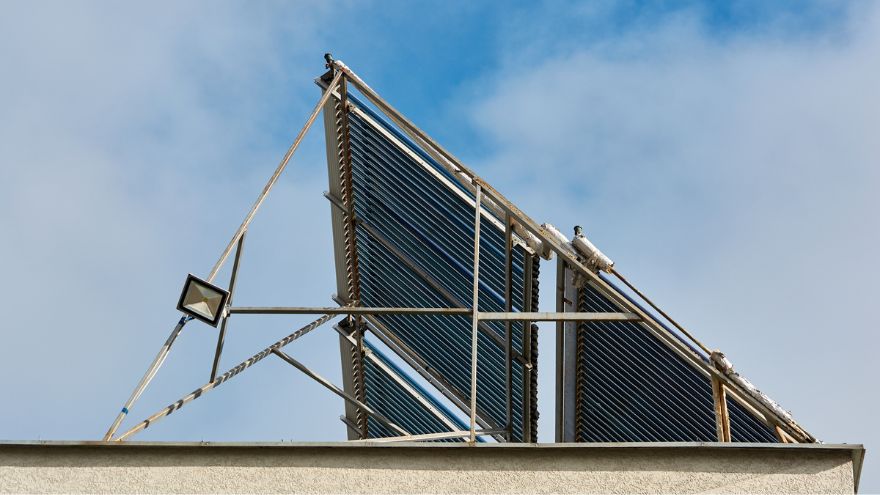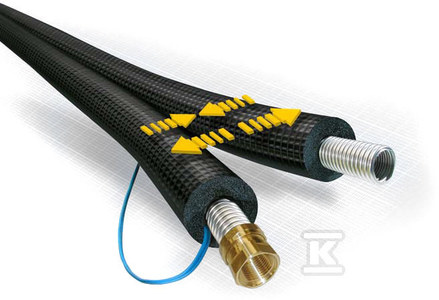Solar collectors are a modern solution that allows you to use solar energy to obtain heat. It is used primarily to heat domestic water. However, for the entire solar installation system to function effectively, it must be properly constructed and prepared.

Check out solar pipes at the Onninen wholesaler
How to choose the cross-section of a solar pipe?
As in any system, in a solar installation the energy carrier liquid must be transported from the collectors to the tank, exchanger or other destination. Appropriate pipes are necessary to ensure the tightness of the system and to be resistant to the effects of glycol poured into the installation .
 The solar pipe is most often made of stainless steel , which is highly resistant to harmful factors as well as mechanical damage. Pipes made of copper are also a good solution. The exceptionally high temperature of the systems, large temperature fluctuations, and high pressure mean that the products used for the installation must be exceptionally durable.
The solar pipe is most often made of stainless steel , which is highly resistant to harmful factors as well as mechanical damage. Pipes made of copper are also a good solution. The exceptionally high temperature of the systems, large temperature fluctuations, and high pressure mean that the products used for the installation must be exceptionally durable.
In practice, pipes are available in various variants, and the most important parameter to take into account when purchasing is the diameter. Additionally, you should pay attention to the material from which the product is made. For copper pipes, hard and soft models are available. The former are usually sold without insulation, which must be purchased separately, while soft pipes are protected with a single or double insulating layer. It is worth noting that copper models are used only when their diameter does not exceed 42x1.5 mm.
A big advantage is the use of stainless steel pipes in the installation. They are characterized by a corrugated structure, which allows for compensation of thermal expansions. For optimal operation, steel pipes are protected with an appropriate layer of insulation, and its thickness depends on the individual needs of the project. Steel models are available as mono and duo solutions, the latter always equipped with a factory connection to a temperature sensor.
Correct medium flow in the solar installation
Improper adjustment of the diameter of the solar pipe will cause a number of problems, but it should be remembered that both too small and too large a diameter of the cables is very problematic. If the cross-section is too small, a situation occurs in which the heating medium encounters high hydraulic resistance and its flow through the system is inadequate to the needs of effective heating.
 Reducing the flow rate also means that the glycol is not lifted enough by the circulation pump . As a consequence, a situation occurs in which the efficiency of the entire solar installation system decreases. The lack of effective heat transfer increases the heat losses generated by solar collectors. Instead of going to the storage tank, the energy is released into the environment. A big problem is then the operation of the circulation pump, which consumes much more electricity. It needs more power to raise the heating factor to the required level. Incorrect, too small diameter of the cables causes them to wear out faster. The internal surface erodes faster , especially if copper pipes are installed in the system.
Reducing the flow rate also means that the glycol is not lifted enough by the circulation pump . As a consequence, a situation occurs in which the efficiency of the entire solar installation system decreases. The lack of effective heat transfer increases the heat losses generated by solar collectors. Instead of going to the storage tank, the energy is released into the environment. A big problem is then the operation of the circulation pump, which consumes much more electricity. It needs more power to raise the heating factor to the required level. Incorrect, too small diameter of the cables causes them to wear out faster. The internal surface erodes faster , especially if copper pipes are installed in the system.
If the solar pipe has too large a diameter, the fluid flow rate will be too low during operation . In such a situation, there is a risk that air will accumulate in the installation, and when the system is filled with air, it will block the proper flow of glycol. Additionally, there will be problems with heat loss to the environment , and losses from the external surface of the pipes will be large.
The glycol flow speed in the installation should be between 0.40 and 0.70 m/s for it to function properly. The optimal pipe diameter is determined individually, taking into account the needs of a given installation. Determining the total aperture area is therefore necessary to identify the best cross-section, and this task should therefore be entrusted to specialists.
For example , if the system consists of five flat-plate collectors with an absorber area of 1.8 m2, it is possible to install a pipe with a diameter of 16 mm and a flow speed of 0.70 m/s. At the same time, it is worth noting that in such a variant the maximum recommended velocity of the glycol heating medium must be achieved, therefore a more advantageous solution will be to increase the cross-section to DN20 - a larger diameter will reduce the glycol flow rate, but the value will still be within the established range. The installer will make appropriate measurements, taking into account individual needs and the structure itself, because in each system, in addition to the piping, it is also necessary to use additional elements, such as gaskets , tees , elbows and others. Only optimal design development and professional implementation help to optimally prepare an effective and cost-effective installation .
Solar pipes at the Onninen wholesaler
Onninen's offer includes high-quality solar cables , such as the double-inch pre-insulated Duo Solar steel pipe in black . The product prepared by the armacell brand has all the necessary certificates. Prepared for use in complete systems. The product is basically two corrugated steel pipes, thanks to which you can easily and efficiently connect solar panels with a hot water tank, because each pipe has a specific function - supply and return. Due to the specific requirements of the system, the pipe is designed to operate at temperatures down to -50 degrees and at a maximum pressure of 16 bar.
An alternative solution is a SOLAR PRO solar pipe with rubber insulation and a protective coating . This model is made of acid-resistant stainless steel. A big advantage is the wide temperature range in which it can operate effectively. According to the manufacturer, this range is from -40 to +150 degrees Celsius, although the maximum value is even higher - 175 degrees C. Rubber insulation provides excellent protection against UV radiation and at the same time has a low thermal conductivity coefficient.